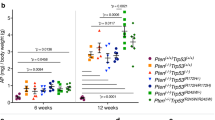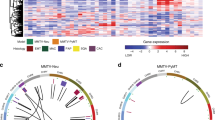Abstract
Purpose: Transgenic mouse models are proving to be invaluable in our effort to understand the molecular basis of metastatic prostate cancer (CaP). We review and discuss how current animal models have contributed to our understanding of the metastatic cascade and how transgenic technology is being used to develop the next generation of mouse models. Our goal is to provide a review of the recent advances and provide a framework for further studies.
Materials and Methods: We performed a MEDLINE search of the literature on CaP metastasis transgenic and animal models.
Results: We present a summary of the characteristics of nine different animal models of CaP. Each model is unique and provides valuable insight into the molecular mechanisms governing the progression of CaP. Our experience with transgenic models and all the new data from the literature predicts that we will be able to develop genetically engineered mice that accurately mimic the heterogeneity, androgen-independent growth, and metastatic spread seen in clinical disease.
Conclusion: In order to elucidate the molecular mechanisms of CaP metastasis, it will be necessary to compare gene and protein expression patterns and biochemical analyses of clinical metastatic disease with data obtained from current models. We will also need to refine our ability to engineer and characterize genetic perturbation models. This type of integrative and iterative approach should facilitate better understanding of the molecular biology of CaP metastases.
This is a preview of subscription content, access via your institution
Access options
Subscribe to this journal
Receive 4 print issues and online access
$259.00 per year
only $64.75 per issue
Buy this article
- Purchase on Springer Link
- Instant access to full article PDF
Prices may be subject to local taxes which are calculated during checkout

Similar content being viewed by others
References
Greenlee RT, Murray T, Bolden S, Wingo PA . Cancer statistics, 2000. CA Cancer J Clin 2000; 50: 7–33.
Zhau HE, Li CL, Chung LW . Establishment of human prostate carcinoma skeletal metastasis models. Cancer 2000; 88(12 Suppl): 2995–3001.
Laufer M et al., Complete androgen blockade for prostate cancer: what went wrong? J Urol 2000; 164: 3–9.
Culig Z et al., Androgen receptor activation in prostatic tumor cell lines by insulin-like growth factor-I, keratinocyte growth factor, and epidermal growth factor. Cancer Res 1994; 54: 5474–5478.
Murillo H et al., Role of PI3K signaling in survival and progression of LNCaP prostate cancer cells to the androgen refractory state. Endocrinology 2001; 142: 4795–4805.
Wu HC et al., Derivation of androgen-independent human LNCaP prostatic cancer cell sublines: role of bone stromal cells. Int J Cancer 1994; 57: 406–412.
Jungwirth A et al., Inhibition of in vivo proliferation of androgen-independent prostate cancers by an antagonist of growth hormone-releasing hormone. Br J Cancer 1997; 75: 1585–1592.
Poste G, Fidler IJ . The pathogenesis of cancer metastasis. Nature 1980; 283: 139–146.
Hanahan D, Folkman J . Patterns and emerging mechanisms of the angiogenic switch during tumorigenesis. Cell 1996; 86: 353–364.
Bussemakers MJ, Schalken JA . The role of cell adhesion molecules and proteases in tumor invasion and metastasis. World J Urol 1996; 14: 151–156.
Fang J et al., Matrix metalloproteinase-2 is required for the switch to the angiogenic phenotype in a tumor model. Proc Natl Acad Sci USA 2000; 97: 3884–3889.
Albelda SM . Role of integrins and other cell adhesion molecules in tumor progression and metastasis. Lab Invest 1993; 68: 4–17.
Bubendorf L et al., Metastatic patterns of prostate cancer: an autopsy study of 1,589 patients. Hum Pathol 2000; 31: 578–583.
Paget S . The distribution of secondary growths in cancer of the breast. Lancet 1889; 1: 571–573.
Yonou H et al., Establishment of a novel species- and tissue-specific metastasis model of human prostate cancer in humanized non-obese diabetic/severe combined immunodeficient mice engrafted with human adult lung and bone. Cancer Res 2001; 61: 2177–2182.
Koeneman KS, Yeung F, Chung LW . Osteomimetic properties of prostate cancer cells: a hypothesis supporting the predilection of prostate cancer metastasis and growth in the bone environment. Prostate 1999; 39: 246–261.
Boyce BF, Yoneda T, Guise TA . Factors regulating the growth of metastatic cancer in bone. Endocr Relat Cancer 1999; 6: 333–347.
Olumi AF et al., Carcinoma-associated fibroblasts direct tumor progression of initiated human prostatic epithelium. Cancer Res 1999; 59: 5002–5011.
Lang SH et al., Interaction of prostate epithelial cells from benign and malignant tumor tissue with bone-marrow stroma. Prostate 1998; 34: 203–213.
Rinker-Schaeffer CW, Welch DR, Sokoloff M . Defining the biologic role of genes that regulate prostate cancer metastasis. Curr Opin Urol 2000; 10: 397–401.
Ichikawa T, Ichikawa Y, Isaacs JT . Genetic factors and suppression of metastatic ability of prostatic cancer. Cancer Res 1991; 51: 3788–3792.
Noordzij MA et al., The prognostic value of CD44 isoforms in prostate cancer patients treated by radical prostatectomy. Clin Cancer Res 1997; 3: 805–815.
Freije JM, MacDonald NJ, Steeg PS . Differential gene expression in tumor metastasis: Nm23. Curr Top Microbiol Immunol 1996; 213(Part 2): 215–232.
Yoshida BA et al., Mitogen-activated protein kinase kinase 4/stress-activated protein/Erk kinase 1 (MKK4/SEK1), a prostate cancer metastasis suppressor gene encoded by human chromosome 17. Cancer Res 1999; 59: 5483–5487.
Dong JT et al., KAI1, a metastasis suppressor gene for prostate cancer on human chromosome 11p11.2. Science 1995; 268: 884–886.
Pollard M . Lobund-Wistar rat model of prostate cancer in man. Prostate 1998; 37: 1–4.
Pollard M, Luckert PH . Production of autochthonous prostate cancer in Lobund-Wistar rats by treatments with N-nitroso-N-methylurea and testosterone. J Natl Cancer Inst 1986; 77: 583–587.
Shirai T et al., Sequential observation of rat prostate lesion development induced by 3,2′-dimethyl-4-aminobiphenyl and testosterone. Jpn J Cancer Res 1993; 84: 20–25.
Dunning WF . Prostate cancer in the rat. Monogr Natl Cancer Instit 1963; 12: 351–369.
Isaacs JT . The R-3327 system of rat prostatic cancers. Urol Oncol 1996; 2: 115–116.
Geldof AA, Rao BR . Prostatic tumor (R3327) skeletal metastasis. Prostate 1990; 16: 279–290.
Waters DJ et al, Workgroup 4: spontaneous prostate carcinoma in dogs and nonhuman primates. Prostate 1998; 36: 64–67.
Galasko CS . Mechanisms of lytic and blastic metastatic disease of bone. Clin Orthop 1982; 169: 20–27.
Waters DJ, Bostwick DG . Prostatic intraepithelial neoplasia occurs spontaneously in the canine prostate. J Urol 1997; 157: 713–716.
el-Gabry EA, Halpern EJ, Strup SE, Gomella LG . Imaging prostate cancer: current and future applications. Oncology (Huntingt) 2001; 15: 325–336: discussion 339–342.
Rubin SJ et al., Two prostate carcinoma cell lines demonstrate abnormalities in tumor suppressor genes. J Surg Oncol 1991; 46: 31–36.
Bookstein R et al., Promoter deletion and loss of retinoblastoma gene expression in human prostate carcinoma. Proc Natl Acad Sci USA 1990; 87: 7762–7766.
Gingrich J, Barrios R, Foster B, Greenberg N . Pathologic progression of autochthonous prostate cancer in the TRAMP model. Prostate Cancer Prostatic Dis 1999; 2: 270–275.
Gingrich JR et al., Androgen-independent prostate cancer progression in the TRAMP model. Cancer Res 1997; 57: 4687–4691.
Foster BA et al., Characterization of prostatic epithelial cell lines derived from transgenic adenocarcinoma of the mouse prostate (TRAMP) model. Cancer Res 1997; 57: 3325–3330.
di Sant'Agnese PA . Neuroendocrine differentiation in carcinoma of the prostate. Diagnostic, prognostic, and therapeutic implications. Cancer 1992; 70(1 Suppl): 254–268.
Kaplan-Lefko PJ et al., Pathobiology of autochthonous prostate cancer in a pre-clinical transgenic mouse model. Prostate 2003. In press.
Masumori N et al., A probasin-large T antigen transgenic mouse line develops prostate adenocarcinoma and neuroendocrine carcinoma with metastatic potential. Cancer Res 2001; 61: 2239–2249.
di Sant'Agnese PA . Neuroendocrine differentiation in human prostatic carcinoma. Hum Pathol 1992; 23: 287–296.
Gabril MY et al., Prostate targeting: PSP94 gene promoter/enhancer region directed prostate tissue-specific expression in a transgenic mouse prostate cancer model. Gene Therapy 2002; 9: 1589–1599.
Maroulakou IG, Anver M, Garrett L, Green JE . Prostate and mammary adenocarcinoma in transgenic mice carrying a rat C3(1) simian virus 40 large tumor antigen fusion gene. Proc Natl Acad Sci USA 1994; 91: 11236–11240.
Garabedian EM, Roberts LJ, McNevin MS, Gordon JI . Examining the role of Paneth cells in the small intestine by lineage ablation in transgenic mice. J Biol Chem 1997; 272: 23729–23740.
Garabedian EM, Humphrey PA, Gordon JI . A transgenic mouse model of metastatic prostate cancer originating from neuroendocrine cells. Proc Natl Acad Sci USA 1998; 95: 15382–15387.
Perez-Stable C et al., Prostate, adrenocortical, and brown adipose tumors in fetal globin/T antigen transgenic mice. Lab Invest 1996; 74: 363–373.
Perez-Stable C et al., Prostate cancer progression, metastasis, and gene expression in transgenic mice. Cancer Res 1997; 57: 900–906.
Bonkhoff H . Neuroendocrine differentiation in human prostate cancer. Morphogenesis, proliferation and androgen receptor status. Ann Oncol 2001; 12(Suppl 2): S141–S144.
Krijnen JL et al., Do neuroendocrine cells in human prostate cancer express androgen receptor? Histochemistry 1993; 100: 393–398.
Jiborn T, Bjartell A, Abrahamsson PA . Neuroendocrine differentiation in prostatic carcinoma during hormonal treatment. Urology 1998; 51: 585–589.
Bonkhoff H, Stein U, Remberger K . Endocrine–paracrine cell types in the prostate and prostatic adenocarcinoma are postmitotic cells. Hum Pathol 1995; 26: 167–170.
Fixemer T, Remberger K, Bonkhoff H . Apoptosis resistance of neuroendocrine phenotypes in prostatic adenocarcinoma. Prostate 2002; 53: 118–123.
Berruti A et al., Circulating neuroendocrine markers in patients with prostate carcinoma. Cancer 2000; 88: 2590–2597.
Hoosein NM, Logothetis CJ, Chung LW . Differential effects of peptide hormones bombesin, vasoactive intestinal polypeptide and somatostatin analog RC-160 on the invasive capacity of human prostatic carcinoma cells. J Urol 1993; 149: 1209–1213.
Festuccia C et al., In vitro regulation of pericellular proteolysis in prostatic tumor cells treated with bombesin. Int J Cancer 1998; 75: 418–431.
Ishimaru H et al., Expression of matrix metalloproteinase-9 and bombesin/gastrin-releasing peptide in human prostate cancers and their lymph node metastases. Acta Oncol 2002; 41: 289–296.
Tarle M, Ahel MZ, Kovacic K . Acquired neuroendocrine-positivity during maximal androgen blockade in prostate cancer patients. Anticancer Res 2002; 22: 2525–2529.
Hu Y et al., Molecular characterization of a metastatic neuroendocrine cell cancer arising in the prostates of transgenic mice. J Biol Chem 2002; 277: 44462–44474.
Liotta LA, Stetler-Stevenson WG . Tumor invasion and metastasis: an imbalance of positive and negative regulation. Cancer Res 1991; 51(18 Suppl): 5054s–5059s.
Lokeshwar BL . MMP inhibition in prostate cancer. Ann NY Acad Sci 1999; 878: 271–289.
Shiozaki H et al., E-cadherin mediated adhesion system in cancer cells. Cancer 1996; 77(8 Suppl): 1605–1613.
Umbas R et al., Decreased E-cadherin expression is associated with poor prognosis in patients with prostate cancer. Cancer Res 1994; 54: 3929–3933.
Levenson VV, Transue ED, Roninson IB . Internal ribosomal entry site-containing retroviral vectors with green fluorescent protein and drug resistance markers. Hum Gene Ther 1998; 9: 1233–1236.
Yang M et al., Whole-body optical imaging of green fluorescent protein-expressing tumors and metastases. Proc Natl Acad Sci USA 2000; 97: 1206–1211.
Sweeney TJ et al., Visualizing the kinetics of tumor-cell clearance in living animals. Proc Natl Acad Sci USA 1999; 96: 12044–12049.
MacLaren DC et al., PET imaging of transgene expression. Biol Psychiatry 2000; 48: 337–348.
Author information
Authors and Affiliations
Corresponding author
Rights and permissions
About this article
Cite this article
Winter, S., Cooper, A. & Greenberg, N. Models of metastatic prostate cancer: a transgenic perspective. Prostate Cancer Prostatic Dis 6, 204–211 (2003). https://doi.org/10.1038/sj.pcan.4500655
Received:
Revised:
Accepted:
Published:
Issue Date:
DOI: https://doi.org/10.1038/sj.pcan.4500655
Keywords
This article is cited by
-
Establishment and characterization of stable red, far-red (fR) and near infra-red (NIR) transfected canine prostate cancer cell lines
Cancer Cell International (2020)
-
Glipizide suppresses prostate cancer progression in the TRAMP model by inhibiting angiogenesis
Scientific Reports (2016)
-
Mouse models for studying prostate cancer bone metastasis
BoneKEy Reports (2016)
-
Targeting and Killing of Metastatic Cells in the Transgenic Adenocarcinoma of Mouse Prostate Model With Vesicular Stomatitis Virus
Molecular Therapy (2013)
-
In vivo animal models for studying brain metastasis: value and limitations
Clinical & Experimental Metastasis (2013)



